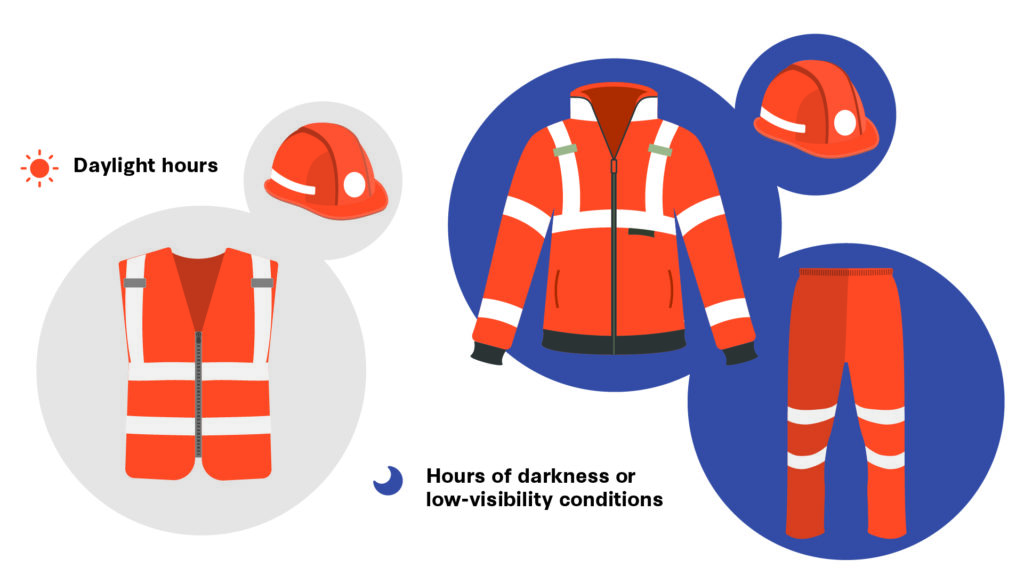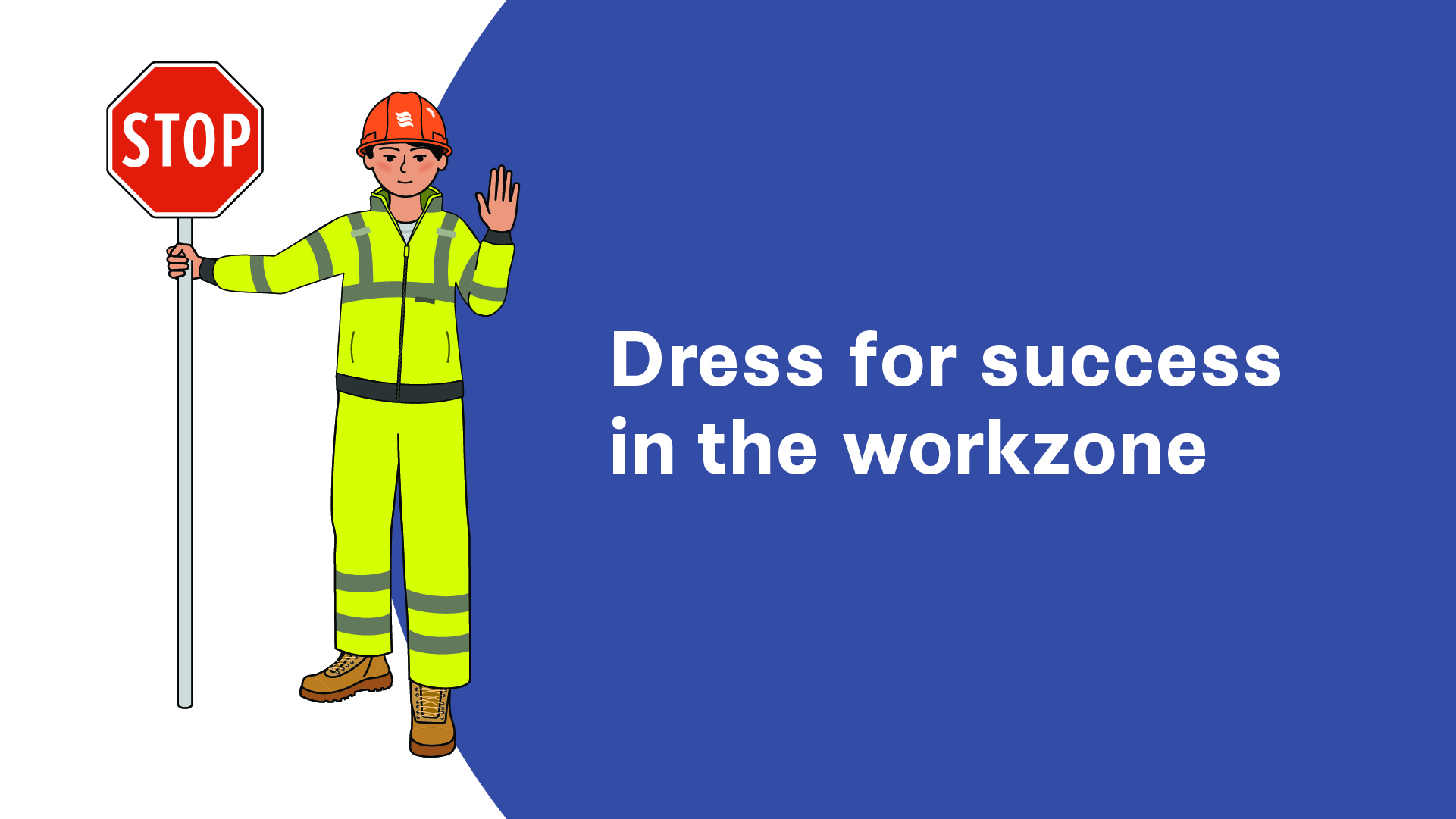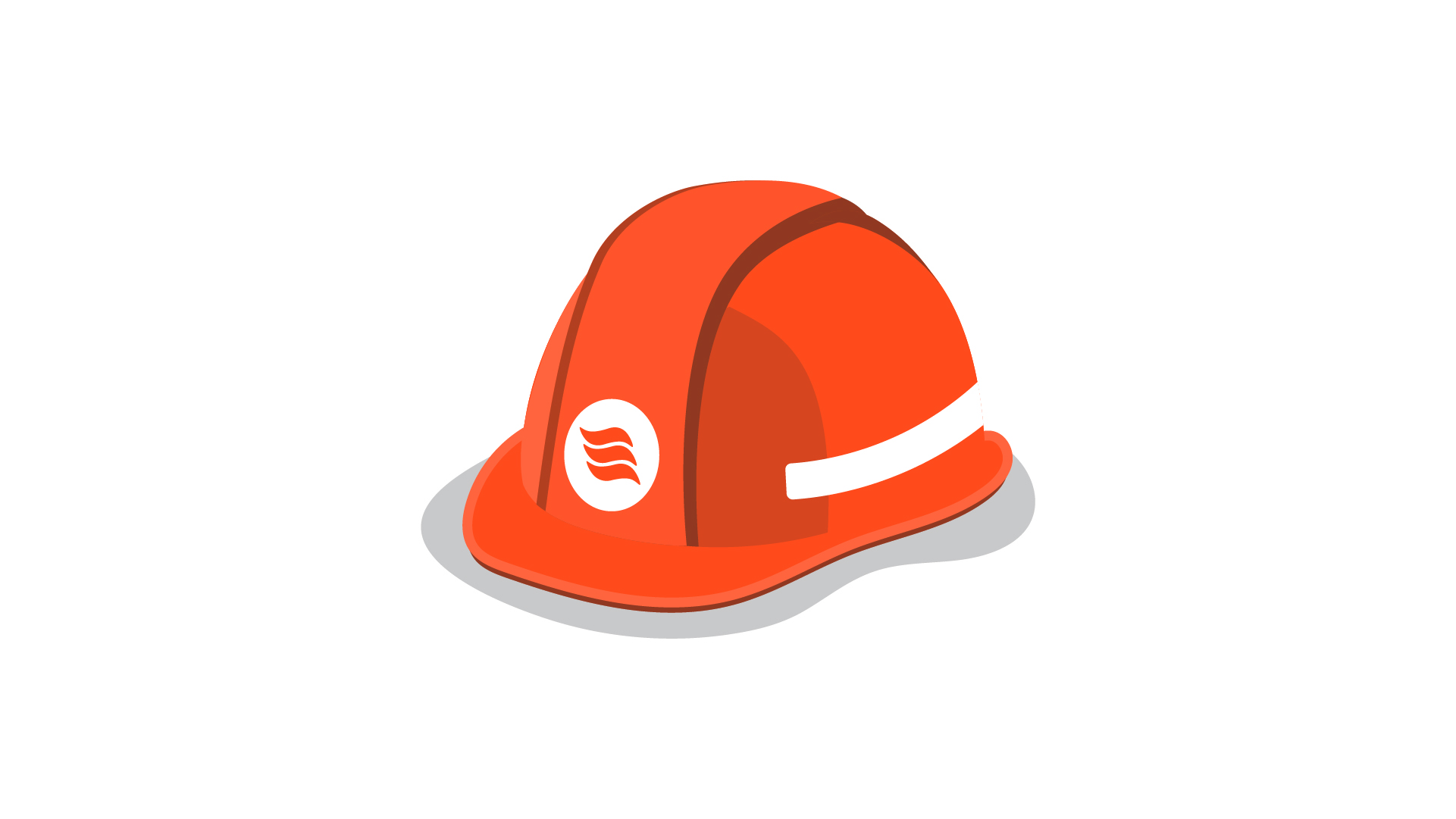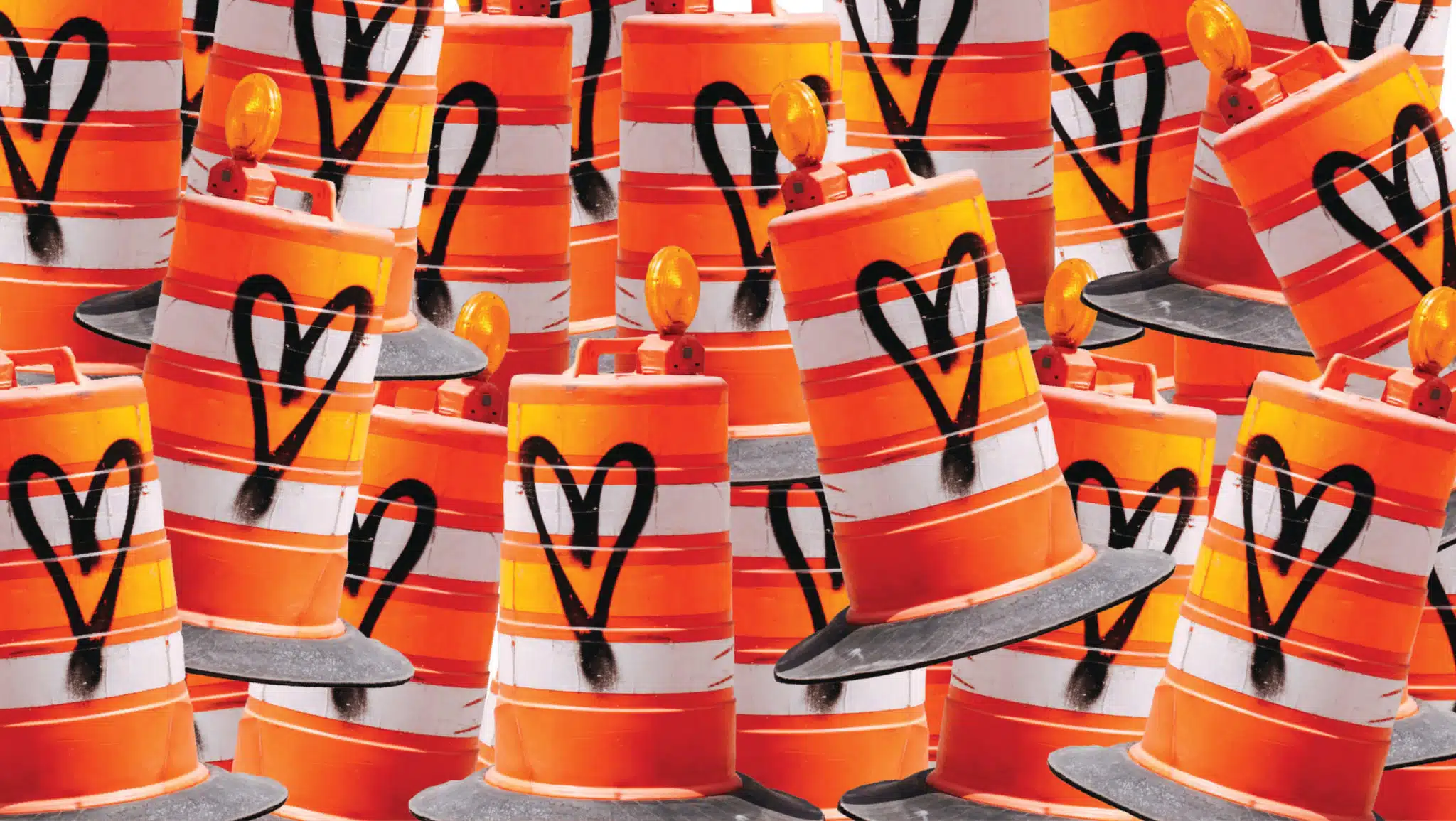MUTCD-compliant clothing requirements and recommendations for flaggers
Flagging is a challenging and hazardous job that requires strong mental and physical abilities, and takes place in tough work environments. Wearing the right combination of hi-visibility apparel and workwear is one of the keys to keeping yourself safe in the work zone.
Recommended hi-vis safety apparel
High Visibility (or “hi-vis”) Safety Apparel (sometimes abbreviated as HVSA) is made out of fluorescent and retroreflective materials, which helps you be easily seen by drivers and others in the work zone.
- Fluorescent colors are ones that appear to glow, especially in outdoor light. Fluorescent colors are most visible during the day.
- Retroreflective materials are designed to reflect light directly back toward its source. These materials appear to glow brightly when light shines on them. Retroreflective materials are most visible at night or in dark conditions.
The Manual on Uniform Traffic Control Devices (MUTCD) requires flaggers to wear a hi-vis vest or jacket that meets ANSI/ISEA 107 Class 2 or 3 requirements. Approved colors are fluorescent yellow-green or fluorescent orange-red.
It is also recommended that you wear a hard hat when flagging. Hard hats are usually white, or hi-vis yellow, yellow-green, orange, or red.
Note that some states, local jurisdictions, or companies may have additional requirements — always check with your supervisor for details on what you should wear. Washington State has additional requirements that go beyond those in the MUTCD.
What to wear during hours of darkness
Most states define nighttime, also called “hours of darkness,” as ½ hour before sunset to ½ hour after sunrise, or during other low-visibility conditions such as snow, fog, or heavy rain.
During these hours, it is recommended that you wear:
- an ANSI/ISEA 107 Class 3 garment, which has sleeves, and
- an ANSI/ISEA 107 Class E lower garment
Wearing an upper garment with sleeves along with hi-vis pants helps you be recognized as a person (rather than an object on the road) by drivers who have limited visibility in dark conditions.
You should also consider adding retroreflective material to your hard hat to provide 360 degrees of visibility at night.
Rain or shine, make sure you’re visible
If you work in wet or snowy conditions that necessitate rain- or cold-weather gear, that gear should meet these same hi-vis requirements.
It is also recommended that you have clothing in more than one approved color so you can be seen in different environments. For instance, in the springtime, fluorescent orange may stand out more against a green background than fluorescent yellow-green.
Workwear that keeps you safe
In addition to your hi-vis gear, you should always wear sturdy shoes and clothing that will help protect you from sun, wind, rain, flying rock, hot surfaces, and other elements you may be exposed to while working outside.
Get sturdy work boots with good traction. Steel-toed boots are often required at work sites. Check with your employer for details.
Your shirt should have sleeves. Short sleeves are acceptable, but styles such as tank tops, muscle shirts, or shirts with cut-off sleeves provide too little protection.
No matter what the weather is like, you should wear long pants when in a work zone. Long pants protect your legs from flying debris, scrapes, sunburn, and other hazards.
Finally, flaggers need to be able to stay alert and have a wide range of vision and hearing while in the work zone. Avoid wearing anything that restricts your vision, such as a hood on a sweatshirt. Personal cell phones and other electronic devices that distract your attention should not be used on the job.
No matter what conditions you’re working in, having the right clothing is your first line of defense against hazards in the work zone.




